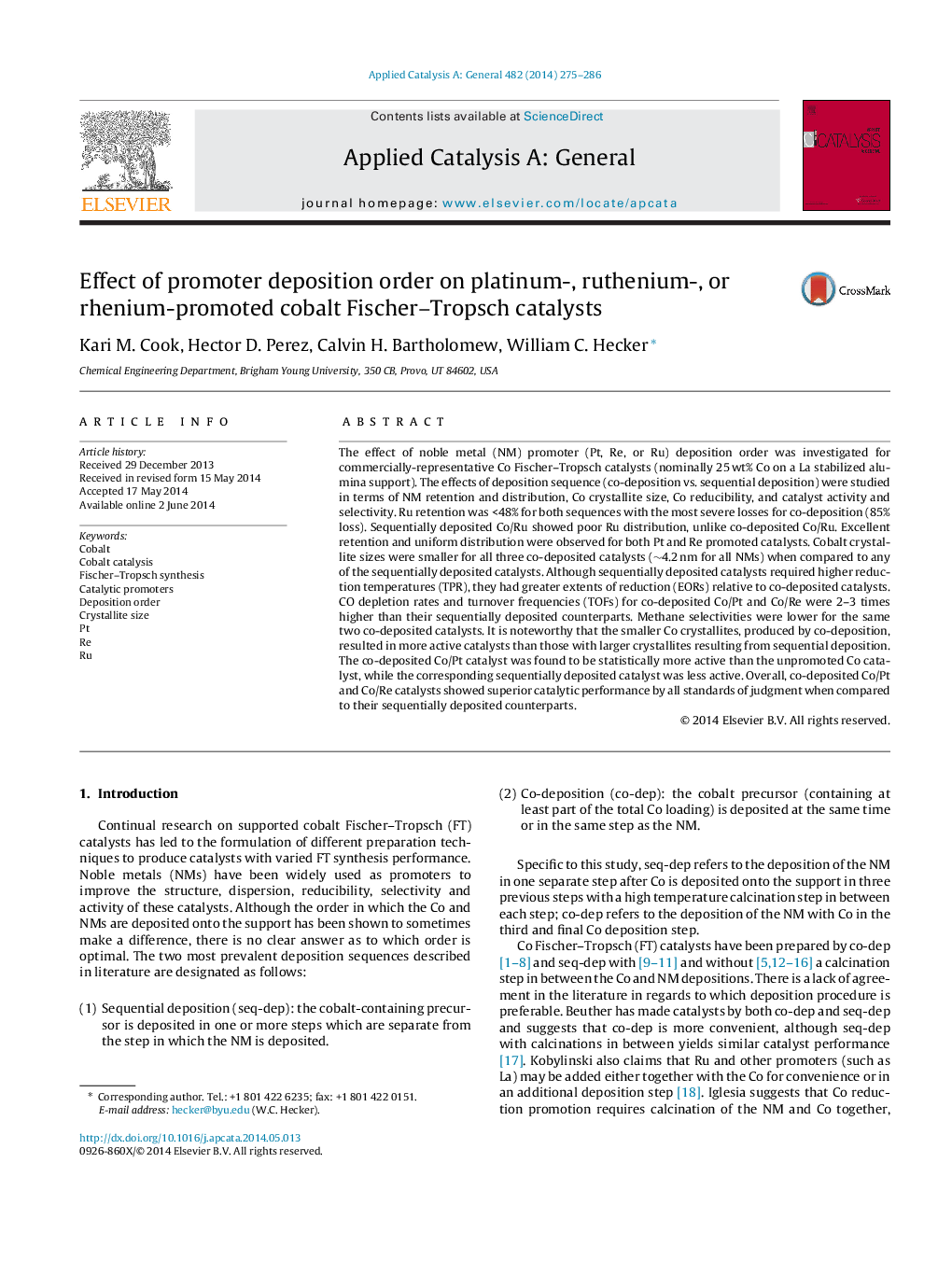| کد مقاله | کد نشریه | سال انتشار | مقاله انگلیسی | نسخه تمام متن |
|---|---|---|---|---|
| 39609 | 45828 | 2014 | 12 صفحه PDF | دانلود رایگان |
• CH4 selectivity lower for co-deposited noble metal than for seq-deposited.
• Activity: Co/Pt-co > Co/Re-co > Co/Ru-co ∼ Co ≥ Co/Pt-seq ≥ Co/Ru-seq ≥ Co/Re-seq.
• Co crystallites (reduced) for co-dep are smaller (4 nm) than for seq-dep (5–8 nm).
• The extent of reduction to Co metal is greater for seq-dep than for co-dep.
• For Co/Ru co-dep gives uniform distribution of metals while seq-dep does not.
The effect of noble metal (NM) promoter (Pt, Re, or Ru) deposition order was investigated for commercially-representative Co Fischer–Tropsch catalysts (nominally 25 wt% Co on a La stabilized alumina support). The effects of deposition sequence (co-deposition vs. sequential deposition) were studied in terms of NM retention and distribution, Co crystallite size, Co reducibility, and catalyst activity and selectivity. Ru retention was <48% for both sequences with the most severe losses for co-deposition (85% loss). Sequentially deposited Co/Ru showed poor Ru distribution, unlike co-deposited Co/Ru. Excellent retention and uniform distribution were observed for both Pt and Re promoted catalysts. Cobalt crystallite sizes were smaller for all three co-deposited catalysts (∼4.2 nm for all NMs) when compared to any of the sequentially deposited catalysts. Although sequentially deposited catalysts required higher reduction temperatures (TPR), they had greater extents of reduction (EORs) relative to co-deposited catalysts. CO depletion rates and turnover frequencies (TOFs) for co-deposited Co/Pt and Co/Re were 2–3 times higher than their sequentially deposited counterparts. Methane selectivities were lower for the same two co-deposited catalysts. It is noteworthy that the smaller Co crystallites, produced by co-deposition, resulted in more active catalysts than those with larger crystallites resulting from sequential deposition. The co-deposited Co/Pt catalyst was found to be statistically more active than the unpromoted Co catalyst, while the corresponding sequentially deposited catalyst was less active. Overall, co-deposited Co/Pt and Co/Re catalysts showed superior catalytic performance by all standards of judgment when compared to their sequentially deposited counterparts.
Figure optionsDownload high-quality image (218 K)Download as PowerPoint slide
Journal: Applied Catalysis A: General - Volume 482, 22 July 2014, Pages 275–286
